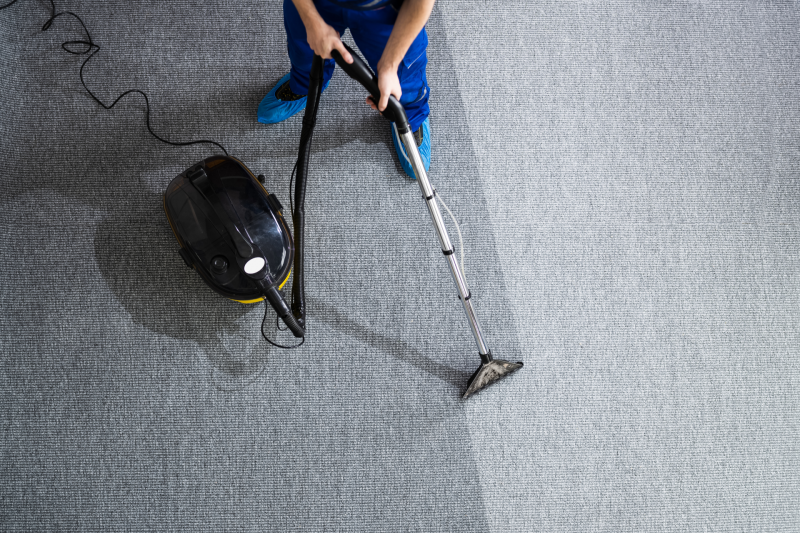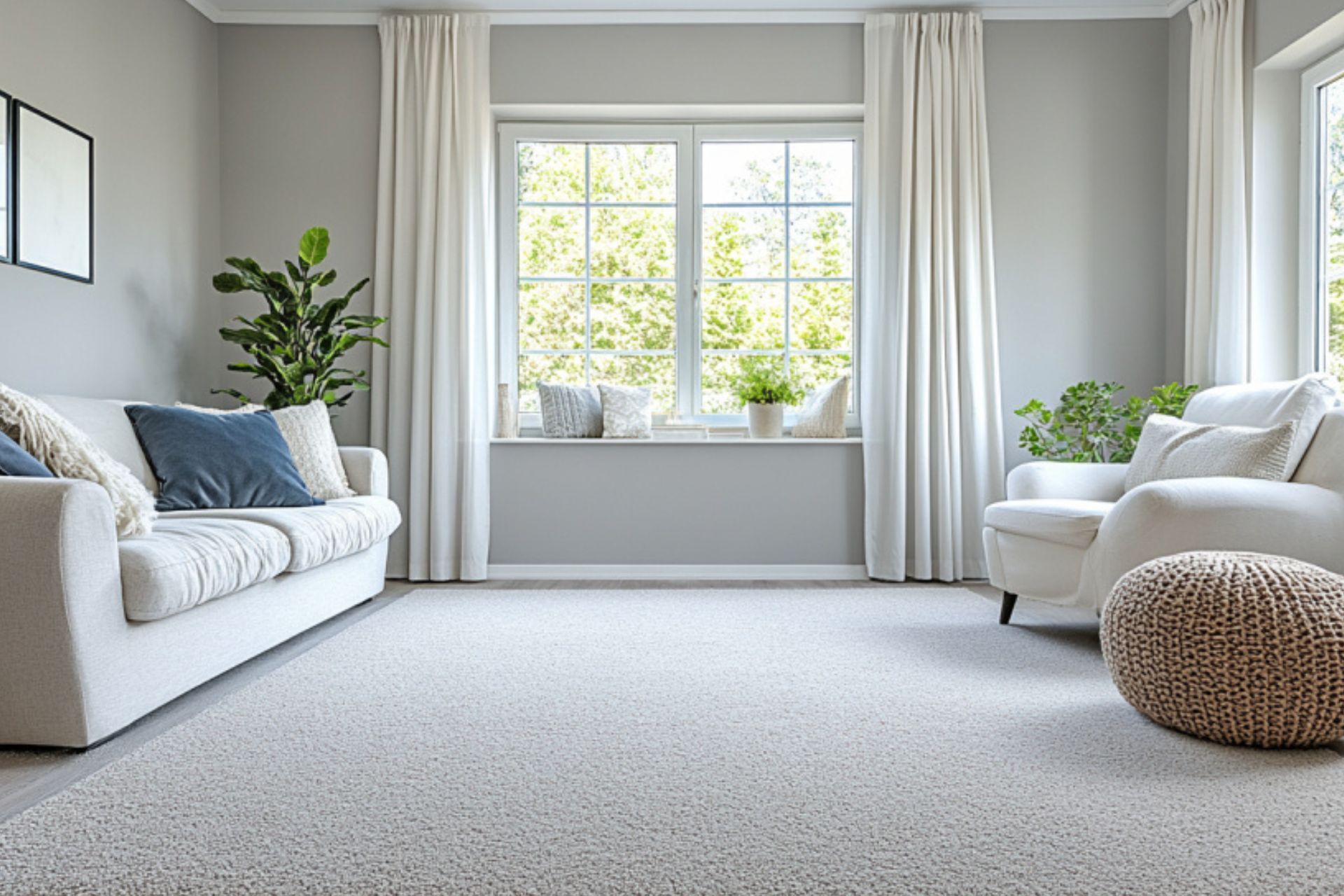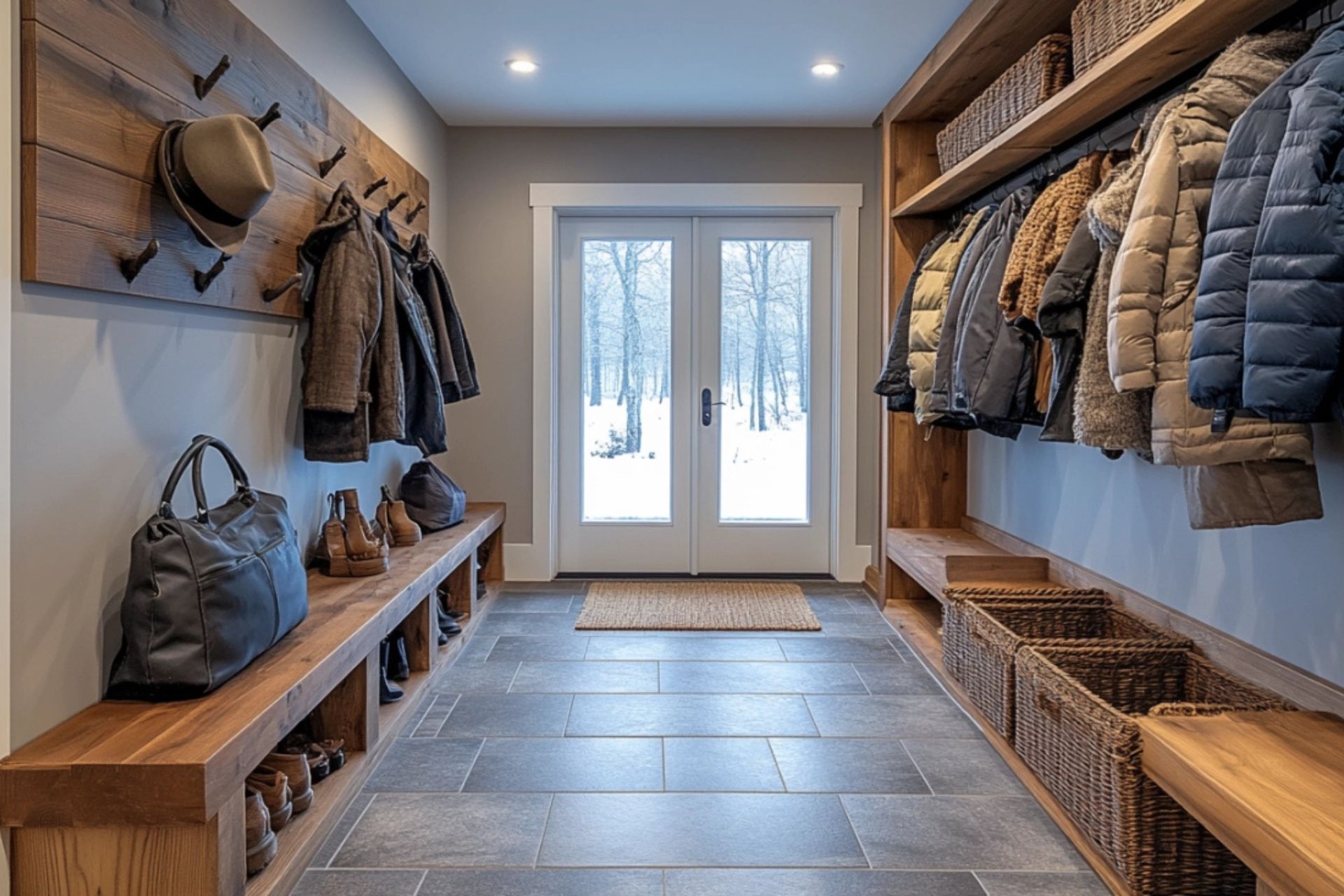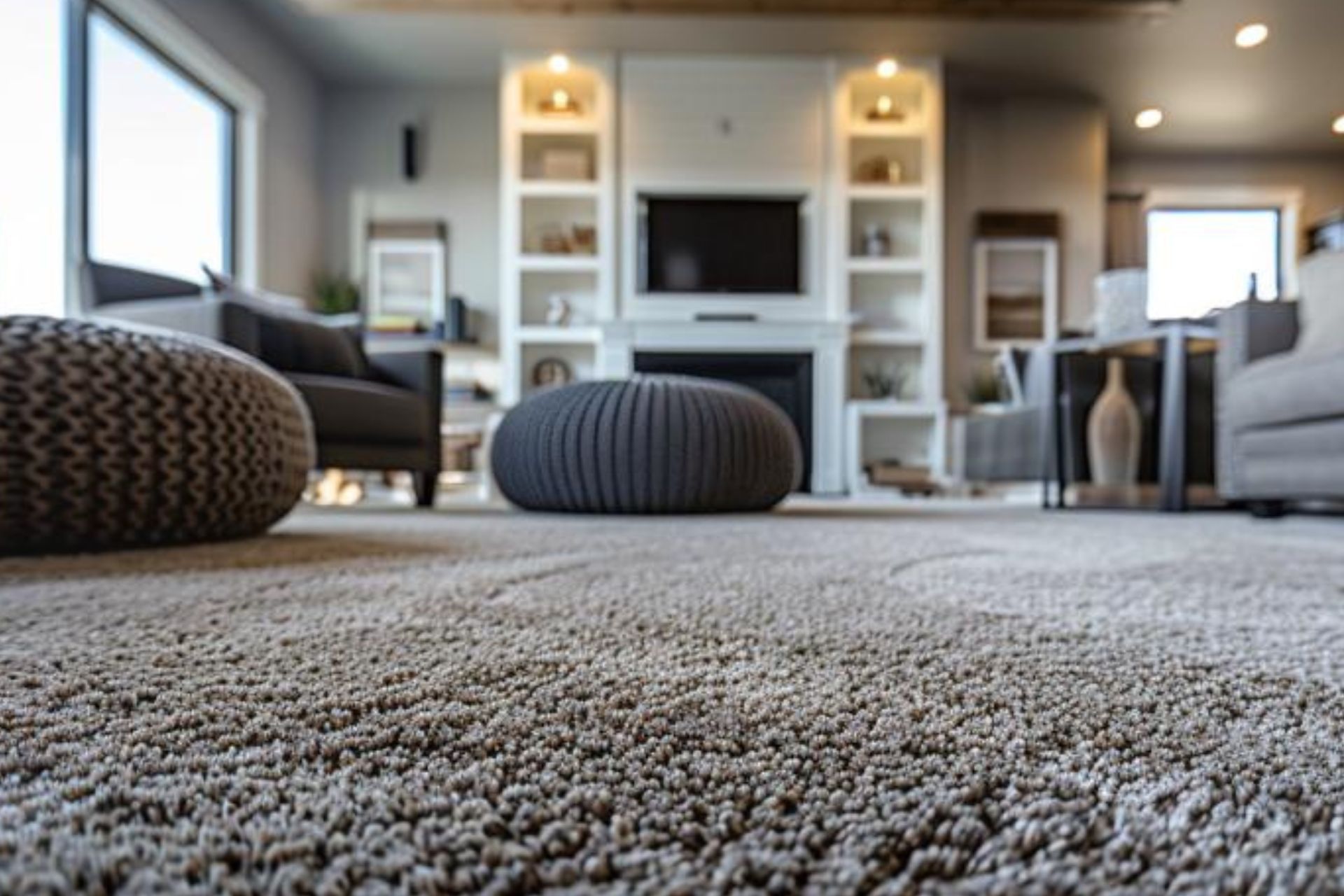
How to Remove Mold From Your Carpets: A Complete Guide
TL;DR: Mold in carpets can harm your home’s appearance and health. Understanding its causes and health risks is essential. You can remove minor mold infestations using protective gear, isolation, vacuuming with a HEPA filter, natural mold removers, and thorough drying. Prevent mold by ensuring proper ventilation, addressing leaks quickly, and regular cleaning. For large or sewage-related mold growth, seek professional help. At EcoFresh, we can assist you in safely removing mold from carpets and maintaining a healthy living environment. Contact us for swift assistance.
Mold growth in carpets can present a significant concern that impacts your residence’s aesthetic appeal while posing health hazards to you and your family. If left unaddressed, mold has the potential to rapidly spread and contribute to respiratory ailments, allergies, and various other health issues.
To effectively eliminate mold from your carpets, you must understand the factors that lead to mold growth and familiarize yourself with the appropriate eradication measures. This guide can help you eradicate mold from your carpets, ensuring you can offer your loved ones a healthy and clean living environment.
So, if you want to learn how to get rid of mold in carpets, stick around for the rest of this guide!
Understanding the Causes of Mold Growth in Carpets
Before we delve into the removal process, we must get to the root of the problem – why mold grows in carpets.
Mold spores occur naturally in the atmosphere and flourish in damp conditions. Due to their dense and absorbent properties, carpets offer an optimal environment for mold to thrive. Mold growth in carpets can be attributed to various factors, including water leaks, excessive humidity, and insufficient ventilation.
Excess moisture is often the main culprit behind mold growth in carpets. Water leaks from plumbing issues or external sources like flooding can seep into the carpet fibers and create a damp environment. If you don’t dry the carpets immediately, this moisture will cause mold to grow in the damp areas.
Similarly, high humidity levels in the air can create a damp atmosphere that promotes mold growth. Carpets can become susceptible to mold infestation without proper ventilation to circulate the air and reduce moisture.
The Health Risks of Mold in Carpets
Exposure to mold in carpets can result in a range of health issues. When individuals come into contact with mold spores, they may experience allergies, respiratory problems, skin irritations, and asthma attacks. It is essential to promptly address mold growth to minimize the risk of health complications.
Also, mold can release mycotoxins, toxic substances that can cause even more severe health problems. Prolonged exposure to these mycotoxins can lead to serious neurological issues, suppression of the immune system, and even damage to organs. Therefore, you must regularly check and clean your carpets to prevent mold from developing.
In cases where mold is already present, professional remediation may be necessary to ensure thorough removal and prevent further health risks.
How to Get Rid of Mold in Your Carpets?
Several methods are available to you in your war against mold that has taken over parts of your carpet. While you can use most of these methods by yourself, given the potentially severe health concerns related to the presence of mold, requesting professional help is the safest step.
If you follow it precisely, the following methodology is proven effective in dealing with minor mold infestations. Here are the necessary steps to remember:
- Safety Precautions: Before you start mold removal, you should get some protective gear for your nose, eyes, and mouth. This prevents direct contact with mold spores and potential respiratory issues.
- Isolate and Evaluate the Area: To prevent the spread of mold spores, isolating the affected area by closing doors and windows is crucial. Then, assess the extent of the mold growth. If the affected area exceeds 10 square feet, it is advisable to seek professional assistance.
- Maintain Dryness in the Area: Keeping the affected area dry is essential to prevent further mold growth. This can be achieved by using a dehumidifier, fans, or opening windows to enhance air circulation and reduce moisture levels. Always clean a carpet when dry, never while still wet.
- Thoroughly Vacuum: Utilize a vacuum cleaner with a HEPA filter to eliminate loose mold spores from carpets. Please pay close attention to the areas infested with mold and their surrounding regions. Then, thoroughly clean the equipment you use for cleaning, whether a canister or vacuum bag.
- Apply a Natural Mold Remover: You can prepare a natural-based cleaning solution to eliminate mold stains and kill any remaining mold spores. Mixing equal amounts of vinegar and hydrogen peroxide with water creates a spray that can eliminate carpet mold. Just spray and let it sit for 15 minutes.
- Scrub the Carpet: Once those 15 minutes go by, use a stiff-bristle brush to scrub the carpet thoroughly. This will help dislodge any remaining mold and stains. Focus on the mold-infested areas and scrub in a circular motion. Rinse the brush frequently to remove any mold debris.
- Rinse with Clean Water: Once you have scrubbed the carpet, rinse the area with clean water to remove any residue from the natural mold remover. Use a clean cloth or sponge to blot the carpet and absorb excess moisture.
- Dry the Carpet: As in the third step, ensure the carpet is completely dry upon cleaning. Do not return furniture or allow your family members to walk over it until it is completely dry.
- Monitor for Recurrence: After removing the mold from your carpet, it is crucial to monitor the area for any signs of recurrence. Regularly check the carpet for dampness, musty odors, or visible mold growth. If you see mold, immediately repeat the cleaning process.
Preventing Mold Growth in Carpets
Prevention is half the cure, or in the case of mold, the full cure. Instead of looking into how to get rid of mold in your carpets, it’s easier to ensure it never gets the chance to settle. Taking preventive measures, particularly for those living in humid areas, is crucial to minimizing the risk of mold growth in your carpets. Here are a few helpful tips to prevent mold from returning:
- Ensure proper ventilation in your home to regulate humidity levels effectively.
- Install dehumidifiers in areas susceptible to high humidity, such as basements and bathrooms.
- Address any water leaks or spills as soon as they happen.
- Clean and dry damp carpets within 24-48 hours to prevent mold growth.
- Regularly vacuum and clean your carpets to eliminate dust and debris.
- Avoid placing potted plants directly on carpets and use moisture barriers underneath them.
- Opt for moisture-resistant padding and select carpet materials less prone to mold growth.
When to Seek Professional Help
While the steps mentioned above can effectively remove mold from carpets, there are instances where professional assistance may be necessary. If the mold growth covers an area larger than 10 square feet, or if the mold results from a sewage backup or contaminated water, it is highly recommended to consult a professional mold remediation service. They have the expertise and specialized equipment to remove mold from your carpets safely and thoroughly.
Wrapping Up
Mold growth in carpets is a common problem that can seriously affect your health and home. Proper care and maintenance allow you to keep your carpets mold-free and maintain a healthy living environment. If mold makes it onto your carpets, following the step-by-step guide in this article can help you effectively remove mold from your carpets and prevent it from coming back.
Remember to prioritize safety during mold removal and seek professional help when needed. Our team at EcoFresh is happy to take on your mold issues and help eliminate them swiftly. You only need to contact us and schedule a visit at your earliest convenience.
FAQ’s
Is mold in carpets dangerous to health?
Yes, mold in carpets can pose health risks. Exposure to mold spores can lead to allergies, respiratory problems, skin irritations, and asthma attacks. Mold can also release mycotoxins, causing severe health issues. Prompt removal is essential to minimize these risks.
Can I remove mold from carpets by myself?
For minor mold infestations, you can attempt removal using proper safety precautions, including protective gear and natural mold removers. However, for large infestations or cases involving sewage backup, it’s safer to seek professional assistance.
How can I prevent mold growth in my carpets?
Preventing mold growth involves ensuring proper ventilation, addressing water leaks promptly, cleaning and drying damp carpets within 24-48 hours, regular vacuuming, and using moisture-resistant materials.
When should I call a professional for mold removal from carpets?
You should seek professional help if the mold growth covers an area larger than 10 square feet or if it results from sewage backup or contaminated water. Professionals have the expertise and equipment to safely and thoroughly remove mold.
Table of Contents
More Categories
Other Articles You May Be Interested In








